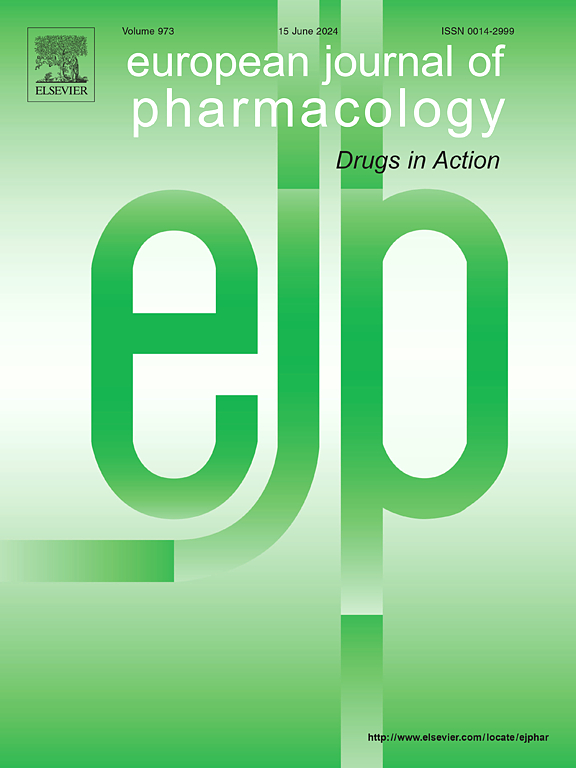精氨酸和免疫调节:炎症和自身免疫性疾病的药理学观点
IF 4.2
3区 医学
Q1 PHARMACOLOGY & PHARMACY
引用次数: 0
摘要
L-精氨酸(2-Amino-5-guanidinovaleric acid, L- arg)是一种半必需氨基酸,主要在尿素循环中产生。它是合成蛋白质、尿素、肌酸、脯胺(包括腐胺、精胺和亚精胺)、脯氨酸和一氧化氮(NO)的关键前体。l -精氨酸在代谢过程中产生NO、谷氨酸和脯胺,在各种生理功能中起着重要的调节作用。除了其代谢作用外,l -精氨酸还显著影响免疫反应,特别是在炎症和自身免疫性疾病的背景下。它通过调节t细胞功能、巨噬细胞极化和细胞因子的释放来影响免疫细胞的活性。重要的是,l -精氨酸在免疫调节中发挥双重作用,根据特定的细胞和生化环境发挥免疫刺激剂和免疫抑制剂的作用。本文综述了l -精氨酸的免疫药理学机制,强调其参与炎症反应及其在自身免疫性疾病如类风湿关节炎、多发性硬化症和炎症性肠病中的潜在治疗应用。L-Arg通过影响一氧化氮合酶(NOS)和精氨酸酶(ARG)的通路,帮助维持免疫平衡,参与疾病的病理生理。更好地了解l -精氨酸在免疫调节中的药理作用,可以为免疫相关疾病的靶向治疗提供新的视角。探索其对免疫信号和代谢途径的影响可能会导致慢性炎症和自身免疫性疾病的新治疗方法。本文章由计算机程序翻译,如有差异,请以英文原文为准。
L-Arginine and immune modulation: A pharmacological perspective on inflammation and autoimmune disorders
L- Arginine (2-Amino-5-guanidinovaleric acid, L-Arg) is a semi-essential amino acid that is mainly produced within the urea cycle. It acts as a key precursor in the synthesis of proteins, urea, creatine, prolamines (including putrescine, spermine, and spermidine), proline, and nitric oxide (NO). WhenL-Arg is metabolized, it produces NO, glutamate, and prolamines, which all play important regulatory roles in various physiological functions. In addition to its metabolic roles,L-Arg significantly influences immune responses, especially in the context of inflammation and autoimmune diseases. It affects the activity of immune cells by modulating T-cell function, the polarization of macrophages, and the release of cytokines. Importantly,L-Arg plays a dual role in immune regulation, functioning as both an immunostimulatory and immunosuppressive agent depending on the specific cellular and biochemical environments. This review examines the immunopharmacological mechanisms of L-Arg, emphasizing its involvement in inflammatory responses and its potential therapeutic uses in autoimmune conditions like rheumatoid arthritis, multiple sclerosis, and inflammatory bowel disease. By influencing the pathways of nitric oxide synthase (NOS) and arginase (ARG), L-Arg helps maintain immune balance and contributes to the pathophysiology of diseases. Gaining a better understanding of the pharmacological effects of L-Arg on immune regulation could yield new perspectives on targeted treatments for immune-related diseases. Exploring its impact on immune signaling and metabolic pathways may result in novel therapeutic approaches for chronic inflammatory and autoimmune disorders.
求助全文
通过发布文献求助,成功后即可免费获取论文全文。
去求助
来源期刊
CiteScore
9.00
自引率
0.00%
发文量
572
审稿时长
34 days
期刊介绍:
The European Journal of Pharmacology publishes research papers covering all aspects of experimental pharmacology with focus on the mechanism of action of structurally identified compounds affecting biological systems.
The scope includes:
Behavioural pharmacology
Neuropharmacology and analgesia
Cardiovascular pharmacology
Pulmonary, gastrointestinal and urogenital pharmacology
Endocrine pharmacology
Immunopharmacology and inflammation
Molecular and cellular pharmacology
Regenerative pharmacology
Biologicals and biotherapeutics
Translational pharmacology
Nutriceutical pharmacology.

 求助内容:
求助内容: 应助结果提醒方式:
应助结果提醒方式:


